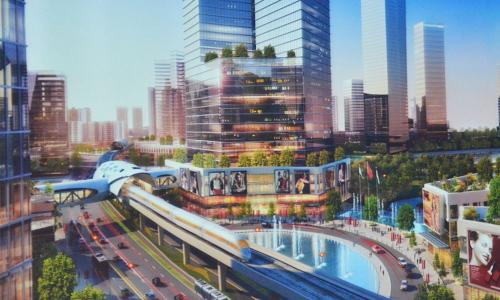Don't condemn Penang transport plan without understanding
LETTER | Earlier this week I was in a working group organized by the Penang Green Council on the topic on sustainable mobility and connectivity. The objective of the group is to prepare an official recommendation to the state authorities.
As part of the deliberation, we interacted consecutively with three experts on transportation. All three were academically qualified and experienced experts in the field. All three had different views on the Penang Transport Master Plan (PTMP).
The first was of the view that Penang needed a good hierarchy of transport system, with the Light Rail Transit (LRT) given top priority. The second expert dismisses the LRT and recommended on-ground tram. The third expert promoted the Bus Rapid Transit (BRT) system.
This should not surprise anyone as it is common for experts to disagree among themselves. One just needs to read enough doctoral theses to know that it is necessary for each expert to outsmart every other expert.
This is not to deny scholarly consensus but pointing out the nature of the academia that is driven by the prestige of originality.
A recent comment by a transport consultant added another take on the PTMP, saying that Penang should look to Singapore not KL for a model.
The consultant questioned PTMP for its multidimensional approach that includes the building of an inter-modal public transport system and the construction of a traffic dispersal network. With all his tirade against the latter, it seems that his alternative plan for PTMP is to stop building roads.
This is very odd as not one city with a good public transport system has stopped building roads. Hong Kong with more than 90 percent of public transport usage still continues to build roads to improve traffic dispersal network.
Singapore spent more than RM502 million building roads in 2017, excluding the RM23 billion North-South Corridor.
Yet, when Penang plans its own traffic dispersal network, the consultant condemned it.
It is a pseudo-conflict to pit the building of public transport versus the construction of a traffic network. If we look at cities like Hong Kong and Singapore, it is not about ‘to build or not to build roads?’, but ‘where to build roads to disperse the traffic?’
The suggestion for congestion charges in Penang is premature as such policy can only be implemented when there exists a good public transport system.
When Singapore started their congestion charges, there was already a widely used public transport system in place (begun with all-bus system before transformed into bus-rail system from 1970s to 1980s).
Singapore’s Area Road Pricing Scheme was introduced in 1975.
The consultant also questions the PTMP for its inter-modal public transport system that consists of LRT, monorail, tram, BRT and sky cab. This is odd as cities with high number of public transport usage have inter-modal system.
Hong Kong has MTR, tram, bus, taxi, boats and cable car. Singapore has MRT, LRT, bus, taxi, and cable car. Inter-modal public transport is common given the different traffic demand in various location.
The consultant seems to imply that the PTMP is planned “relying solely on politicians” and hence lacks expertise. Again, if he actually studied the PTMP documents during the public display, he would have known that the team of experts behind PTMP comprising individuals with doctorates in relevant fields and technical consultancy with a track record of hundreds of projects.
It is not surprising to see experts having different views on PTMP. What is surprising is for an expert to condemn a plan without demonstrating detailed knowledge about it.
Joshua Woo was a member of the traffic management committee and urban planning committee of Seberang Perai Municipal Council, Penang.
The views expressed here are those of the author/contributor and do not necessarily represent the views of Malaysiakini.
RM12.50 / month
- Unlimited access to award-winning journalism
- Comment and share your opinions on all our articles
- Gift interesting stories to your friends
- Tax deductable
